Tour button
From Spectator to Explorer: Rainforest Wild Asia
The evolution of zoo experiences in Singapore
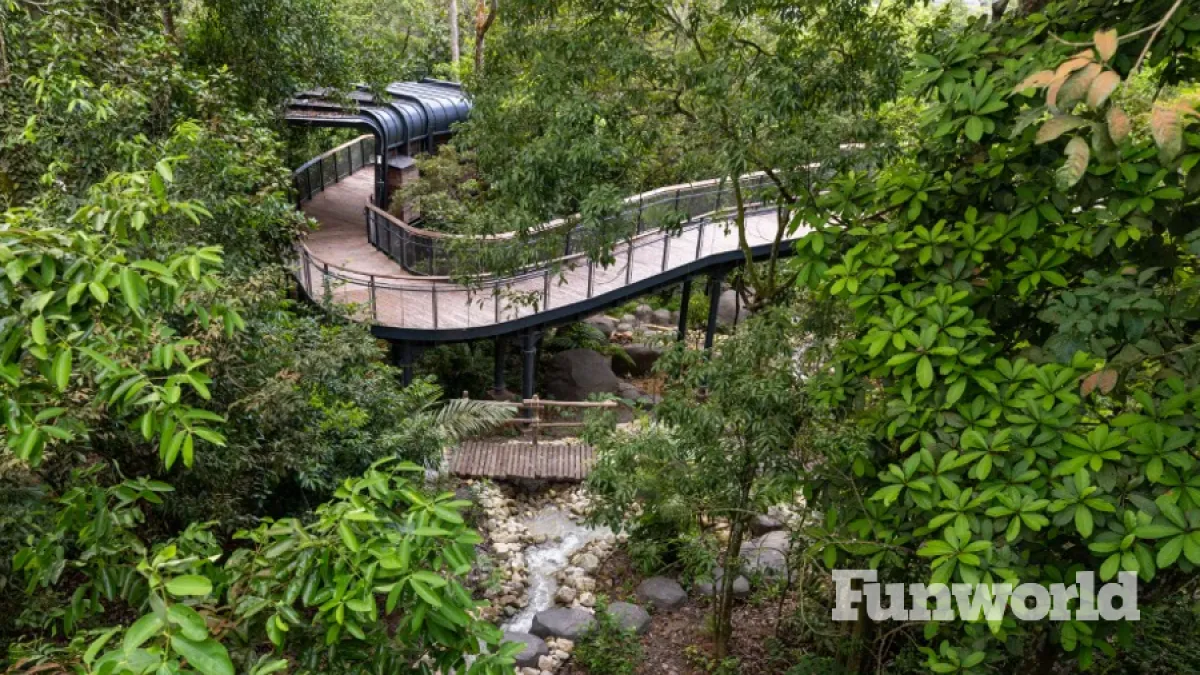
SINGAPORE'S NEWEST WILDLIFE ATTRACTION, Rainforest Wild Asia, offers visitors an adventure-based zoo experience unlike any other in the region.
Located within the Mandai Wildlife Reserve, the 13-hectare park allows animals to roam in naturalistic environments while visitors navigate uneven terrain. Stepping over rocks, crossing man-made logs, and following marker ribbons on trees—to catch a glimpse of wildlife—is part of the experience. The effort is rewarding to see creatures such as the endangered Philippine spotted deer or babirusa that tend to hide amid the trees.
“This park changes the way we typically experience zoos,” says Mandai Wildlife Group Deputy CEO and Chief Life Sciences Officer Dr. Cheng Wen-Haur. “It’s about capturing the spirit of a rainforest adventure, inviting you to fully immerse yourself in nature’s rhythm and discover wildlife in the most unexpected places.”
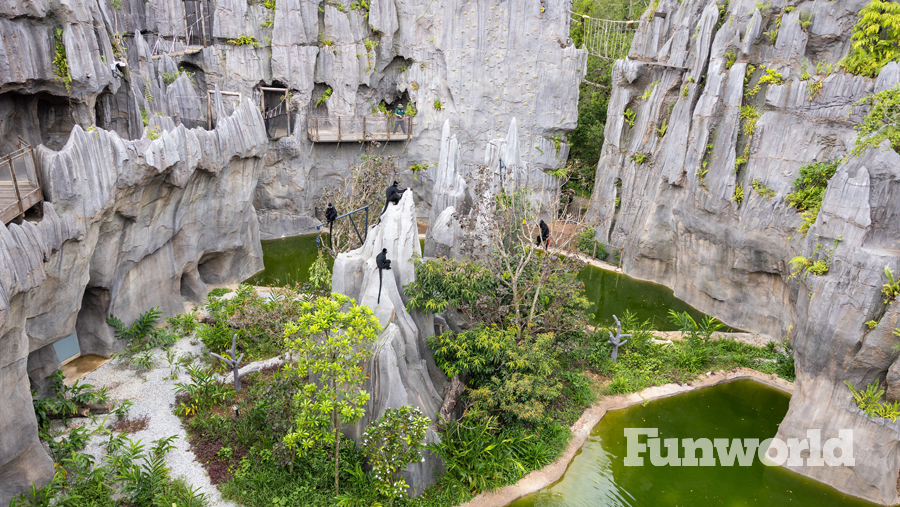
Singapore is a leader in creating immersive, conservation-focused wildlife attractions that set global benchmarks in zoo design. As far back as the 1970s, the Singapore Zoo replaced older habitats with hidden barriers and moats, then in 1994, it launched the world’s first Night Safari.
Rainforest Wild Asia, Singapore’s fifth zoological attraction, builds on this tradition and elevates the experience to a new level, enabling visitors to explore different layers of a rainforest—from the forest floor, to the canopy, to subterranean cave chambers inspired by Sarawak’s famous Mulu Caves.
The park’s eight zones are connected by a network of intersecting forest trails and wide elevated walkways. They are all suitable for strollers and wheelchairs, allowing visitors to easily move between them, even as the design preserves much of the site’s original flora and topography.
“Since we were working to create a rainforest environment, it was crucial for us to retain as many of the mature trees on the original site as we could,” explains Michelle Yik, Mandai Wildlife Group’s lead designer for the park. “That meant adapting our design to fit around the tree clusters, which you’ll see in the winding elevated walkways.”
“The trees not only add authenticity to the experience but also maintain ecological connectivity and provide shade for animals and visitors. We also designed around the existing landscape, rather than altering the natural topography,” adds Yik.
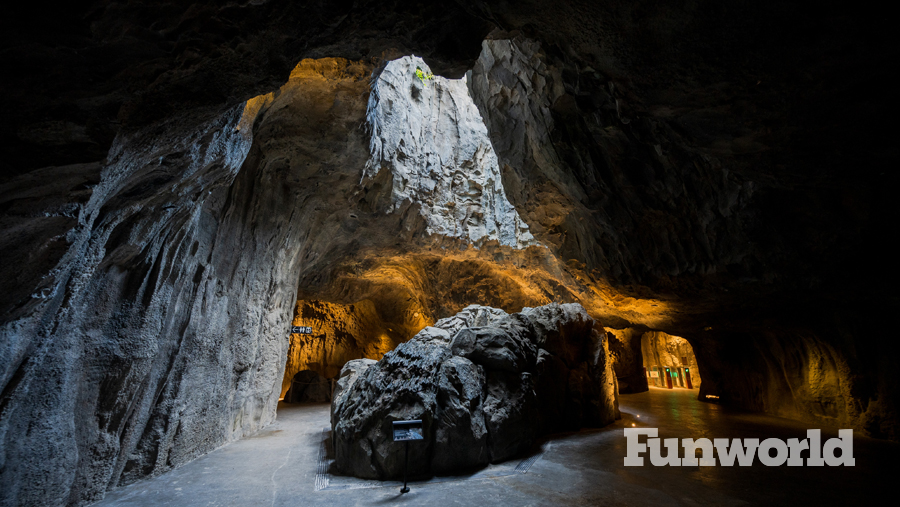
The Business Case: Expanding the Zoo’s Reach
Mandai Wildlife Group expects as many as 900,000 people to visit Rainforest Wild Asia within its first year of operation.
“We want to create a destination that tourists consider a must-visit when coming to Singapore,” says Cheng. “And for locals, it’s a place to proudly share with friends from abroad and a space to engage in meaningful interactions with wildlife.”
The Mandai Wildlife Group, formerly known as Mandai Park Holdings and Wildlife Reserves Singapore, expects the new gated attraction will expand the resort’s appeal to a broader demographic.
“Zoos often cater to families with young children, leaving younger adults and teens under-engaged,” he explains. “With Rainforest Wild Asia, we hope to capture their interest by offering an adventure-based zoo experience that combines excitement with education.”
To this end, the park features a set of high-adrenaline attractions that mimic how animals move through their environments. Canopy Jump simulates a young bird’s first flight, allowing participants to step off a 13 or 20-meter platform into a controlled free fall. The AIA Vitality Bounce, a sprawling netted play area several meters off the ground, lets visitors experience the rainforest canopy as a langur might—bounding and leaping between treetops.
For those seeking something even more extreme, there are three-hour harnessed tours that take participants into otherwise inaccessible areas of the park. In the Wild Apex Adventure, visitors scale 20-meter-high limestone karsts surrounding the habitat of the François' langur, while spelunkers who sign up for the Wild Cavern Adventure rappel into darkness, squeeze through narrow tunnels, and navigate rocky labyrinths.
These premium activities also create additional revenue streams, from S$30 for a Canopy Jump to S$192—more than four times the basic admission price—for an adventure excursion.
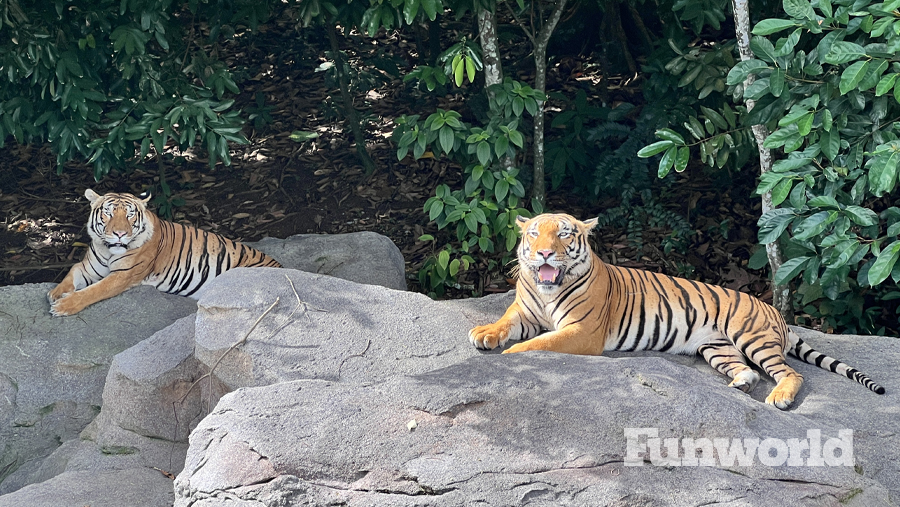
Wild by Design
Rainforest Wild Asia is home to 36 species, including the François' langur and the endangered Philippine spotted deer, both of which are new to Singapore. Three Malayan tigers, including two brothers born at the Night Safari, also reside in the park.
“We live in one of the world’s most biodiverse regions, but many of the region’s species are under threat due to the loss of wild habitats and the negative impact of pollution,” says Mike Barclay, Group CEO of Mandai Wildlife Group. “With the belief that you can’t protect what you don’t know, we want to raise awareness about the region’s incredible wildlife species by shining a spotlight on them in this park.”
The park’s innovative design presents both opportunities and challenges. Animals enjoy significantly larger habitats to roam and explore compared to traditional zoos, but the expansive spaces and dense foliage can make wildlife viewing less predictable.
“The larger-sized habitats and dense foliage mean animals can sometimes be harder to see, so we had to design the space with strategically placed viewing points while allowing the animals the space they need to thrive,” says Michelle Yik, Mandai Wildlife Group’s lead designer for the park.
Visitors may hear the distinctive call of the endangered siamang gibbon without spotting it among the trees–something that requires patience and a different mindset from traditional zoo visits. Park officials acknowledge they will need to properly set visitor expectations. The difficulty spotting some animals could be balanced out by spectacular views of others, such as the red-shanked douc langur, a colorful primate that sometimes traverses the elevated walkways.
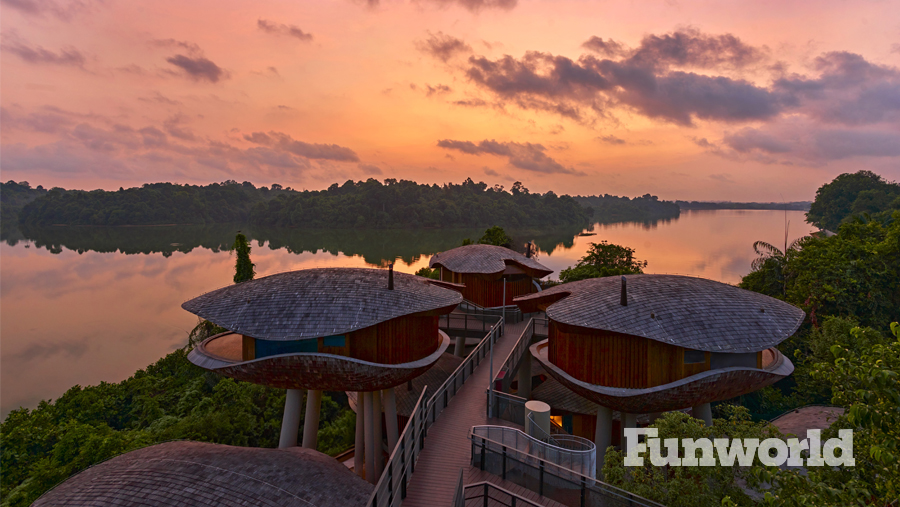
An Innovative Resort
One of the park’s most distinctive features is its 220-meter-long cavern, meticulously modeled after the UNESCO World Heritage Site of Mulu Caves in Sarawak, Malaysia, in collaboration with Kingsmen Creatives.
“It was a huge undertaking, requiring a lot of detail to get the geological and ecological accuracy just right,” Yik says. “We worked closely with experts and the Sarawak Forestry Corporation, even doing 3D scans of the actual caves. It was a complex task, but the result brings the park to life and adds to the sense of wonder.”
The caves are home to luminescent Asian black scorpions, cave racer snakes, and the Cavern Restaurant—what Mandai claims is Singapore’s first restaurant in a cave setting. Operated by the Tung Lok Group, this unique dining establishment illuminated by electric candlelight is accessible to the public without requiring park entry.
Mandai Wildlife Reserve also formed a partnership with Banyan Tree on a new 338-room, 4.6-hectare hotel nestled within the reserve, transforming the attraction into a destination resort. The eco-friendly Mandai Rainforest Resort overlooking Singapore’s Upper Seletar Reservoir consists of a five-story building with more than 300 rooms and suites, plus 24 treehouses with private patios and a spa with a design inspired by pangolin scales. Hotel guests can enjoy exclusive wildlife experiences, including an early morning visit to Bird Paradise and immersive tours of the zoo for children 6 to 10 years old.
Next up, Mandai Wildlife Reserves plans to expand Rainforest Wild Asia with a new zone, Rainforest Wild Africa, inspired by Madagascar and sub-Saharan Africa, further cementing Singapore’s position as a global leader in innovative wildlife experiences.
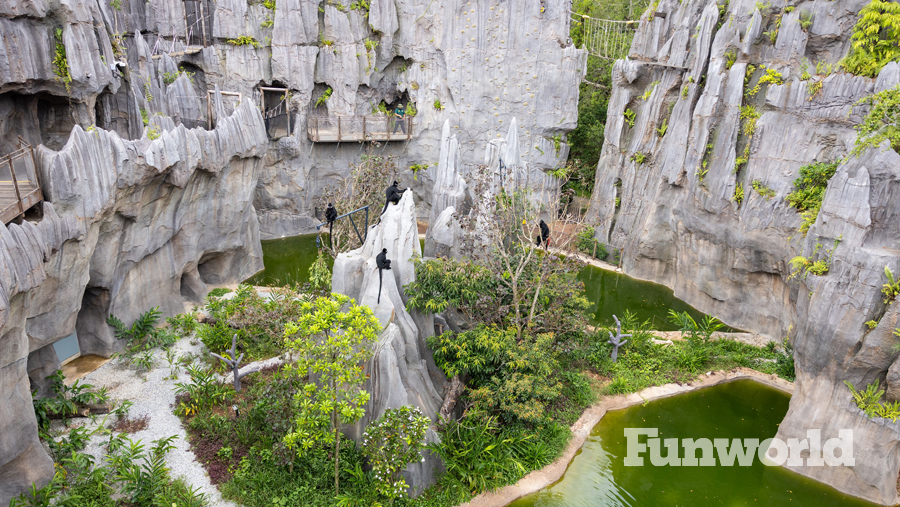
Follow IAAPA for news and event announcements in your favorite social media apps
Connect with the Real Stories Behind the Fun
Follow our social media for authentic stories, special moments, and behind-the-scenes looks from the attractions world.












 The Official Magazine of IAAPA
The Official Magazine of IAAPA